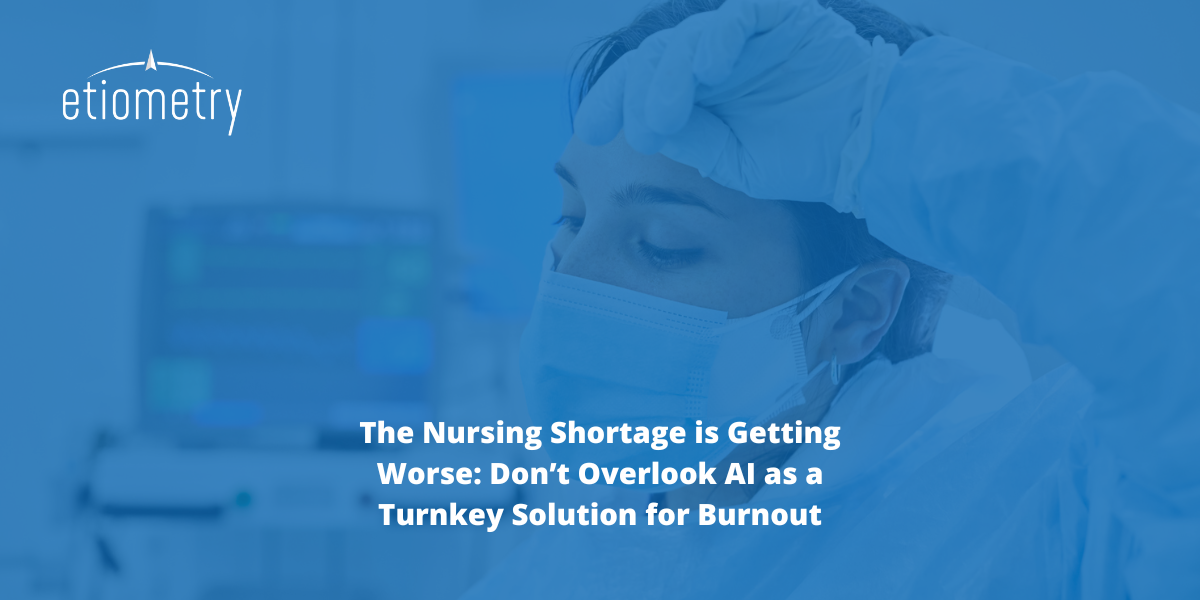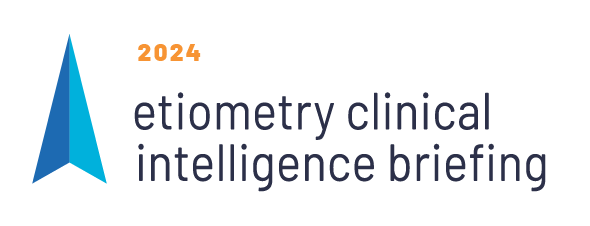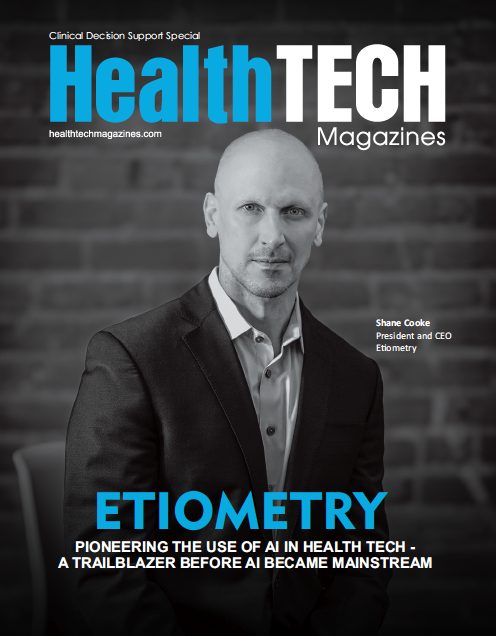The Nursing Shortage is Getting Worse: Don’t Overlook AI as a Turnkey Solution for Burnout
Blog

A shortage of critical care nurses is not a new challenge for hospitals and health systems, but new data highlight the severity of the problem – which is projected to persist. The impacts of short-staffed clinical teams extend beyond the risk of burnout – which only perpetuates this problem – and can affect quality of care, length of stay, readmissions and more. Although one platform can’t entirely solve this complex issue, Etiometry’s clinical intelligence platform is helping to provide much-needed relief for high-acuity care teams.
SHORTAGE COMPOUNDED BY THE PANDEMIC AND AGING POPULATION
Nurses at various stages in their careers have left or are considering leaving the profession due to burnout. A 2022 survey revealed 40% of RNs said COVID-19 had negatively impacted their career satisfaction and 15% said they would leave nursing in three years. Then there are the “baby boomer” nurses, nearing retirement age, whose valuable on-the-job knowledge will be severely missed, further straining workflows.
As the U.S. population ages, there’s also a higher demand for experienced nurses to care for the geriatric population, including increasingly more complex patients with chronic diseases and comorbidities.
ENTER ARTIFICAL INTELLIGENCE
Even if you put the above issues aside, the very nature of caring for high-acuity patients is stressful and puts clinicians at risk for burnout. This is where the Etiometry clinical intelligence platform shines.
What if nurses didn’t have to track data points from multiple monitors and labs to watch for patient deterioration?
When armed with the right contextual information and situational awareness – like the Etiometry platform provides – care teams share a consolidated, unified view of the patient’s status. Streamlined communication frees up time for enhancing patient care.
What if newer nurses had guidance for treatment escalation and could quickly communicate an issue with the physician?
Immediate access to aggregated, trended patient data on one Etiometry screen helps alleviate the pressure on the nurse to clearly articulate issues after witnessing a few events that might not have surfaced during physician rounds.
Using the Etiometry platform to communicate the big picture of what is going on with the patient eases the burden of manually building a mental model of the patient’s condition and communicating it to other care providers. Etiometry paints the picture automatically, so nurses can simply show the visualization of what they are observing.
What if nurses could start their shifts with critical insights from one screen?
The Etiometry platform directly supports nurses in their day-to-day workflow as a communication tool for hand-offs, by providing an on-the-fly view of the patient trajectory, guidance for treatment escalation, and supporting patient management protocols and care plans.
At its core, the Etiometry Platform uses data aggregation and visualization software to capture and visualize patients’ physiologic data and track their clinical course. The AI-powered software continuously trends high-fidelity data from disparate clinical systems and displays a holistic view of a patient’s clinical status on one easy-to-interpret screen.
To learn more about how the Etiometry Platform can help retain and attract nurses at your organization, get in touch.


